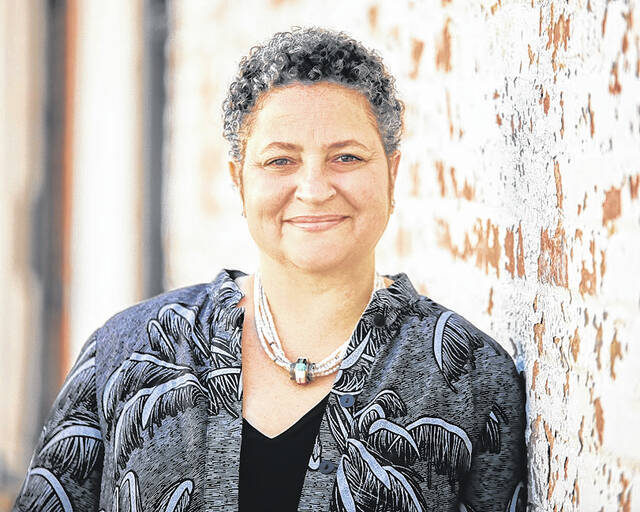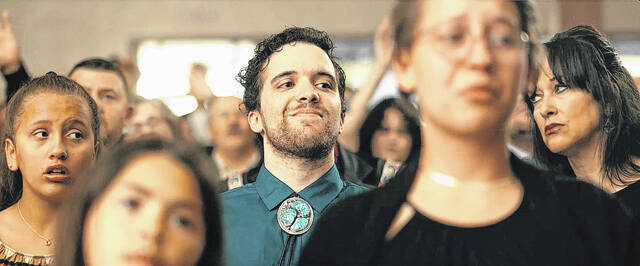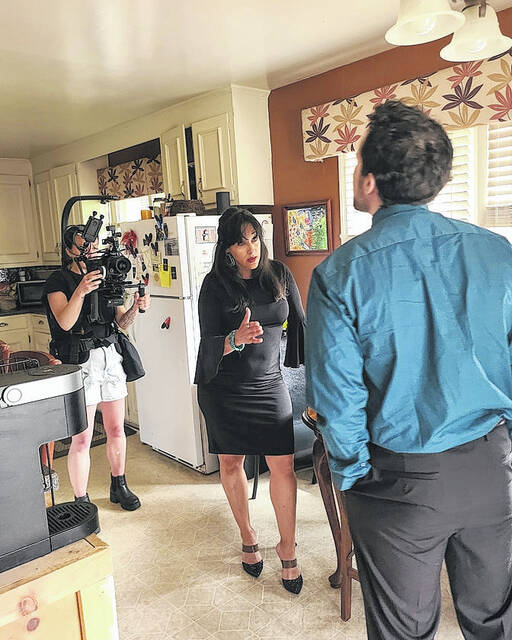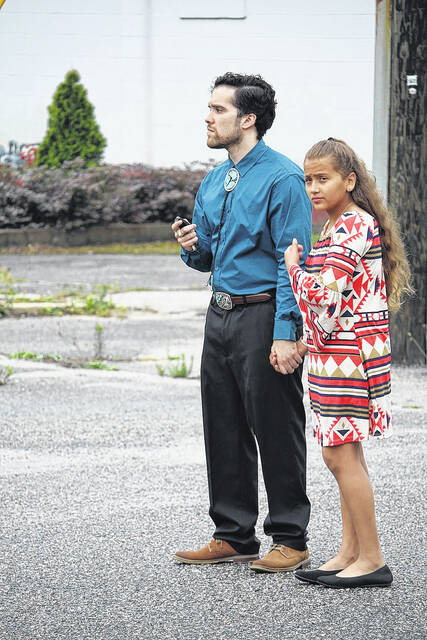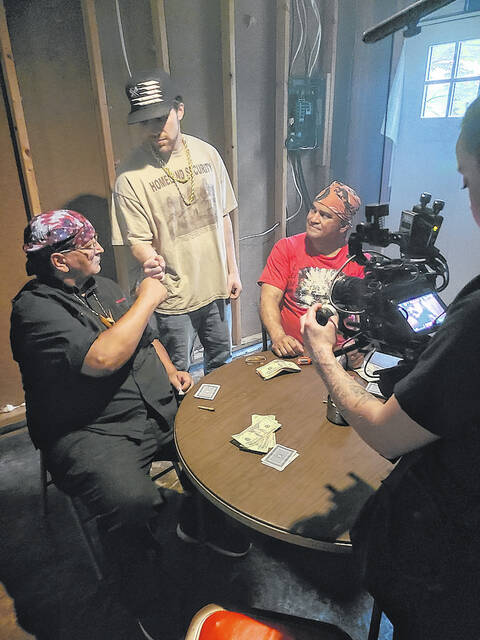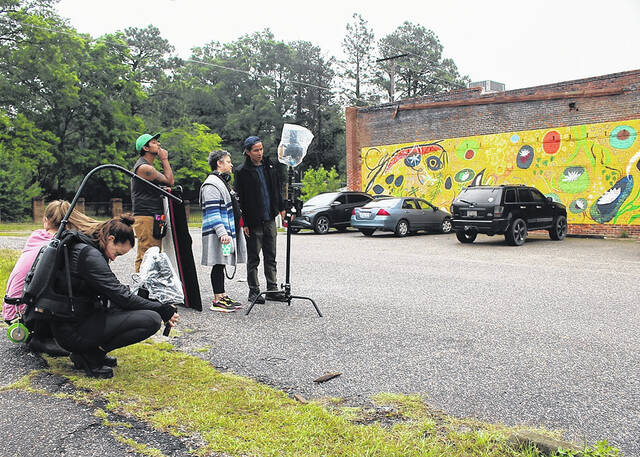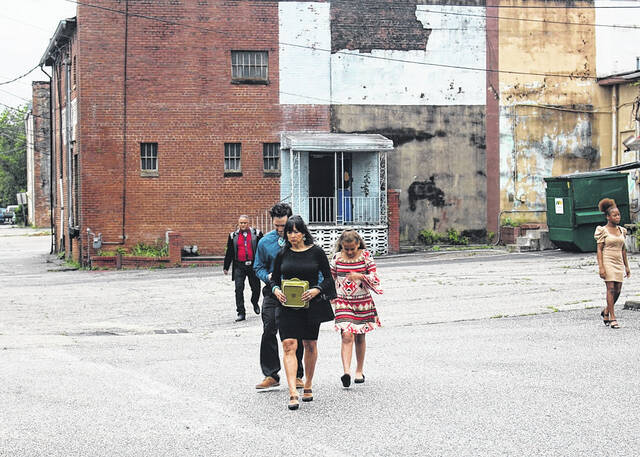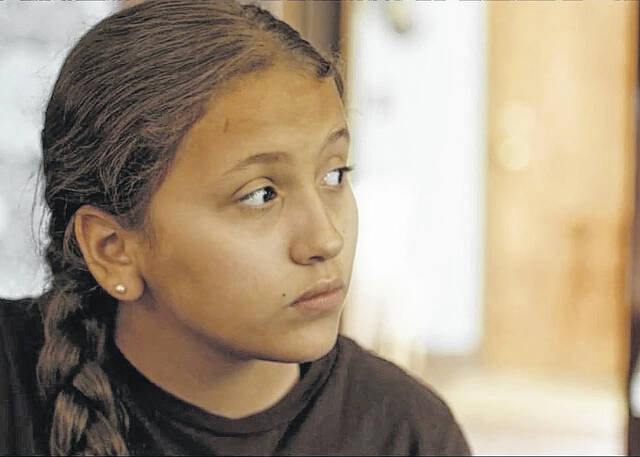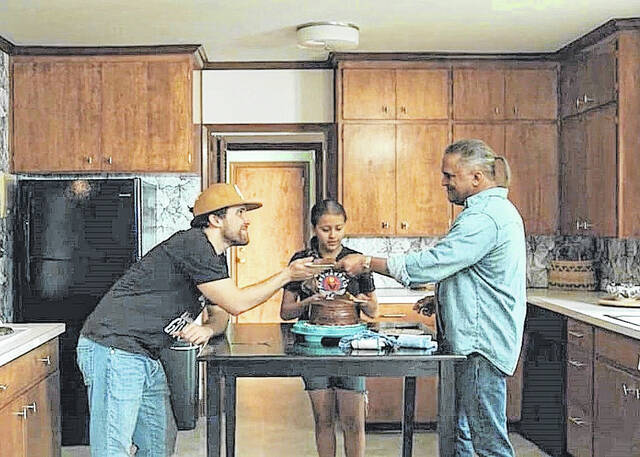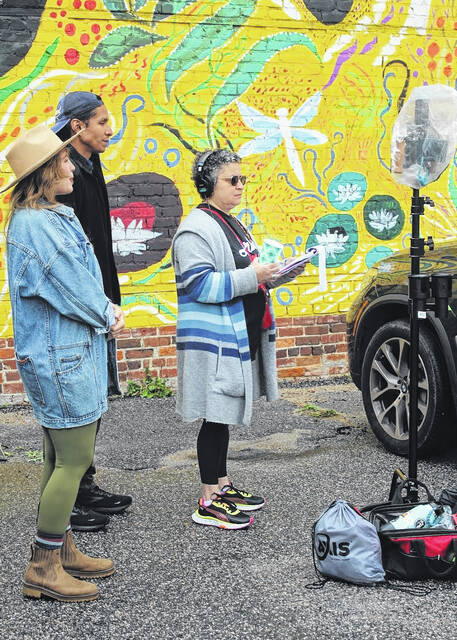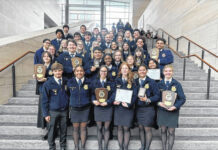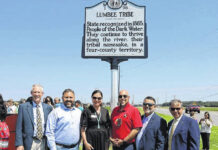Q & A with Executive Producer Malinda Maynor Lowery
‘Lumbeeland’ to open Film Festival on July 5
The short film “Lumbeeland,” a labor of love by Executive Producer and Writer Malinda Maynor Lowery, will headline the opening night of the Lumbee Film Festival with a sold-out screening on July 5. A second showing at 1 p.m. on July 6, was added to the festival schedule to accommodate film fans.
“You can always come on Friday night – we’ll have a rush line to fill any unclaimed seats,” said Dan Brawley of the Cucalorus Film Foundation. The festival screenings will be on July 5 and 6 in the James A. Thomas Hall on the UNC Pembroke campus.
This is the sixth annual Lumbee Film Festival that takes place during the Lumbee Homecoming. The Lumbee Film Festival showcases original films made by Native Americans, Indigenous Filmmakers and American Indians, especially members of the Lumbee Tribe living in North Carolina and across the country. The website for the Film Festival schedule is https://lumbeefilmfestival.eventive.org/schedule .
Dr. Malinda Maynor Lowery, an award-winning scholar and Cahoon Family Professor of American History at Emory University, belongs to the Lumbee Tribe of North Carolina. She has authored two books and two dozen articles and essays on Lumbee history. She has also produced and appeared in short and feature-length documentary films that have premiered at the Sundance Film Festival, on PBS, and HBO.
Lowery discussed her most recent short film, “Lumbeeland,” with Dr. Darlene W. Natale of UNC Pembroke.
DWN: What inspired you to make this fictional film about the drug culture within the Lumbee community?
MML: I was born in 1972. And so, I remember a lot of the uncertainty of the 1980s and 90s, when the drug economy was such a present issue in our community. It seems like that hasn’t really stopped with the rise of fentanyl use and accidental overdoses. The corruption in our county that seems to stimulate that–to center around the drug economy; it felt like we were not able to have real honest conversations about something that affects all of us.
And so, having made documentaries for a long time, I’m always wanting to go to the source– wanting to deal with people who are most affected by an issue. But this is not a topic that it’s safe to go to the source, you know.
And so, I became aware that a lot of folks wanted to talk about this and hadn’t really found a safe way to do it. So let’s, with the conversation came “let’s,’ let’s create some characters that are based on people we know, but not necessarily line up with an exact, you know, true life story, right? But let’s bring in parts of our lives and our conversations that we have to have in our communities that we shouldn’t have to have, you know, and we should be able to feel, I think, some empathy for those affected by this issue, because it affects all of us. None of us are about it. So it was a way to talk about things that are just impossible to talk about. And then, I think that’s the gift of art and film in particular, is that it generates empathy and allows people to share things that are really, really hard for them, that they may feel anger about, for example, or shame. So we can see some fictional characters going through it, maybe it makes it easier for us to talk about it.
DWN: Are you expecting blowback from the community?
MML: Yeah, Well, you know, I think there is a good reason why we haven’t talked about this–it’s really hard. It’s hard to admit that we struggle with something that, as Nancy Reagan used to say, we should just be able to say no to, right?
But anybody who experiences addiction and their family knows that it’s not that simple. And the broader society hasn’t given us tools to do something other than just say no, especially when, over the last several hundred years, you know, for the Lumbee people, our property has been taken from us, our culture has been taken from us, and we haven’t been able to hold the people responsible for that theft.
And so, when you can’t hold people responsible for a crime that occurred, you start to feel shame, and you start to feel anger. And those feelings of shame and anger become so internalized that we almost, I think we almost freeze up when it comes to something like the drug economy and the shame and anger, you know, on top of that. So, there’s so many layers of this.
I think if people are uncomfortable with it, that’s something that I really want to listen to. And I want to think with them about how do we create something that draws folks together rather than separates them?
You know, we certainly have a lot of conservative folks in our community that are reluctant to embrace anything related to the drug culture for good reasons.
It has harmed us. I think we also want to be able to talk openly about that harm. And that’s what the film features, a family trapped in this, but it’s really a story about imperfect people who want good things. And I think that that’s all of us as Lumbee people, none of us are perfect, but we do really want good things for our families.
And we’re often trapped by circumstances, not in our control, as we try to achieve those things. So being able to just depict a family who’s in that–is part of it. I also think that it was important to me to not just show, for example, any active drug use in the film, you know, it was important to me to be able to not glamorize this issue or the circumstance the way a lot of Hollywood movies do around the drug trade.
We’re not trying to make drug dealers look like heroes. You know, we’re trying to show people honestly, wrestling was something that they are only now becoming aware of that they’re trapped in, if that makes sense.
DWN: What was your favorite scene to create, design and then shoot?
MML: Oh, probably the funeral scene. It was sort of the most nerve-wracking in some ways. Also, it was a big production. With all of these background actors.
We had to locate, for example, a coffin and I was terribly anxious about where this coffin was going to come from. Our Production Designer, Lynn Linnemeier is a visual artist who works in mixed media and does a lot of community-focused, community-collaborating art. And, because she lives in Red Springs, you know, she got the vibe, as the young people say, almost immediately, and I was like, “Okay, Lynn, we got this funeral. And we need everybody to be sad, but it’s got to be fancy. You know?” Because, like Lumbee funerals, you know, we really get it going!
DWN: What were your local challenges?
MML: The locations were a little bit more of a puzzle because not only do you have to have rooms that kind of match the the story you’re trying to tell about these characters, but you also have to have space for the crew to set up and then to wait, while the takes are rolling, you know, for the actors to get changed for everybody to have food, you know, it’s really quite an involved thing to create–to find a film location.
But we wound up having just a perfect ally and some relatives of mine who are willing to lend their house and then also Kim Pavia, who’s one of our consulting producers, Kim just opened her house to us for almost a week, you know, in terms of just giving us time to, to set up to shoot, to the necessary downtime for lunch breaks and meal breaks. But these are 12 and 14 hour days.
And then the town of Red Springs was just a tremendous partner. So we had security that was provided by the police department, we had Flowers by Dallas. Dallas, unfortunately passed away a few months ago, but his shop there on the Main Street in Red Springs provided flowers for some of our scenes.
We also use a facility called Access Point, which is an event space and they were just incredible to work with. So, locations were tricky to find, because we don’t have a lot of infrastructure for this in our community. But things really turned out incredibly well.
DMN: Were there interesting obstacles/solutions you would like to share?
MML: There’s one scene that calls for it to rain, and I wasn’t sure if we could convincingly manufacture rain. But sure enough, mother nature made sure it rained the day we needed it. That rain made lots of other things more complicated that day, but it was perfect for that scene.
DWN: You shot the film “Lumbeeland” over the ‘23 Labor Day holiday? How tight was the timeline? How’d you get all the actors together and shoot it?
MML: Right. We began recruiting for actors actually, before the script was finished. And we started that because of relationships that I had with UNC Pembroke, for example, and their theater department, which had been putting on “Strike at the Wind” for several years.
And when I back in, gosh, almost 20 years ago, was producing “Strike at the Wind” I met a bunch of actors, performers, a bunch of people who, who really felt passionately about theater and the performing arts in our community.
So finding the actors was not really a challenge, because there is so much talent and a fair amount of experience in that arena. Now, we don’t have a ton of actors who have appeared on film, you know. And so that was a learning curve for everybody.
But our director, Montana Cypress was really anxious to take that challenge on because he’d done that work before and he really saw the rewards and then for everybody.
DWN: How did you select the cast members? Say Billy Oxendine –Did you know him?
MML: I did not know Billy. I knew Billy’s sister Wynona (Oxendine). I met Wynona through Jonathan Drahos at UNCP. And Jonathan also told me about Billy–but it was sort of six degrees of separation from “Strike at the Wind.” All these people have been in “Strike at the Wind,” whether it was two years ago or five years ago or if it was 20 years ago, or in the case of Harvey (Godwin, Jr.), Harvey was in “Strike at the Wind,” I think 40 years ago.
So, it’s like the community of talent that was incubated by that particular production, brought together several of the cast members. But then the other Studio One in Lumberton, the Purple Door productions from Jeanne Koonce. Jeanne nurtures talent, whether it was Roger Dale Locklear or Antoinette Locklear Hurtt.
These are people that have worked with Studio One and Carolina Theater over various years. And maybe they really like Antoinette, I think had not performed since high school. But she’s a tremendous talent, right? She just showed up. She’s a police officer in Spring Hope. Her husband, Carl, is in the military, you know, these are people who are just like, salt of the earth incredibly talented folks, who when they saw the call on Facebook said, “Huh, I’ve always wanted to do this. “You know, “Is this something that I can do?” So anyway, people showed up. And we also had about 35 background actors for a couple of our scenes. And we recruited them through social media, but also through Wynona, as you know well, has been teaching theater at Lumberton High School. So, some of Wynona’s students were part of the background actors, cast, again, friends and family. It’s really been a wonderful way for people to come together.
DWN: What did you see with the character development and the performances that you had in this production? Did you work with them in specific ways? Or did they just bring it to the table?
MML: Yeah, that’s really a great question. I mean, Montana Cypress, has a nice sort of artistic statement. “Normally, this would have felt like a huge challenge due to the amount of dialogue and high-stakes motivations involved. Still, I had slight confidence in this undertaking because the Christmas film I had just finished was filled with nontrained actors. This process has the potential to leave room to improvise where a director could create from an organic canvas, meaning the artist’s raw human presence.”
It for me, as an executive producer and as a writer, I wanted to shape the story and then kind of get out of the way. You know, and because again, I had made a documentary but this was a new genre for me, narrative film.
I had an intuition that, of course, the on camera talent are, you know, equal partners in the storytelling, but I didn’t really anticipate how magical that process would be, you know, seeing my words come to life on the screen was a tribute to this incredible collaboration that, that I saw in real time from Montana and the cast, you know, and again, like, there’s so many people that have to get involved in pulling a film together, we all played a part, but it was really Montana and the various cast members working together, sometimes again, in a more theater style, where you would sort of let a scene play out.
But other times in a more, you know, they would talk about a line or they would talk about the timing, or they would talk about, you know, the meaning of a particular scene as they would try to try to refine it so that the actor, certainly a lot of them, because, again, they’re from the community, they really understand these, the story, and who the characters are. They just, they just brought it, you know. And it was humbling to watch. Humbling is the only word I can think of.
DWN: Were there specific themes or lessons you attempted to convey?
MML: We know that stories about the drug trade are common in film and television, and they often make the drug trade, or the war on drugs, look glamorous. Or they make drug dealers look like people we should want to be. But this film is not like that. I have written about the drug trade in my book “The Lumbee Indians: An American Struggle,” and I want to explore how we can reclaim what we have lost. And if we are to address these problems that nearly all of our families share, we can’t continue to bear it silently. All of us are bearing it together and this film is a way to talk about it.
DWN: How has your upbringing and the Lumbee culture influenced your oeuvre–your body of work in writing and film?
MML: I was born in Robeson County, my parents are Waltz Maynor and Louise Cummings Maynor, and my grandparents are Wayne and Lucy Maynor and Foy and Bloss Cummings. I was raised by my parents in Durham, NC, so two hours away, but we came home all the time. Being both at home and away started me thinking about what people misunderstand about our community, and I got into film and historical research and writing to try to correct those misperceptions.
DWN: What sets “Lumbeeland” apart from other films you have worked on?
MML: The biggest difference for me is that I’ve always produced documentaries, and this is a narrative film, a piece of fiction. But it’s a fictionalized story that is based on true events, and much of it is drawn from real life. I certainly hope that Lumbee people really recognize themselves in the film, even if it’s not about “real” people. Many of the elements came together in conversation with Lumbee family and friends who have been supportive of this project and involved since 2022.
DWN: What was the most difficult artistic choice you had to make during the filming or in post-production?
MML: Just getting a final draft of the script was the most challenging thing, actually. There are so many threads to this story, the characters have such rich backstories, that it was hard to make a decision about which piece of the story we would film. But once that decision was made, we assembled an incredible team of people and it came together very smoothly.
DWN: You were generous enough to let my film students have a sneak preview of “Lumbeeland” and the students remarked about your skills and the creative shots. When you talked with them, they all said they wanted more. So, what is your long term vision for this project?
MML: I want more, too. Well, we are looking for the right production partners at this point. We are making plans for a longer project—possibly a feature film or a series with these characters.
The priority is to be able to say Lumbee people can do this, this is an act of sovereignty to do this for ourselves. But also making it something that everybody can access and, and appreciate. And those kinds of goals can be achieved in our community. And then, we also know that it’s always about outside financing. So what format some funding partners like to see will shape the conversation about what’s next but we’re looking you know, we’re looking at it, we’re kind of constantly engaged. We’re constantly networking, that’s part of why we’re trying to get into a variety of film festivals so we can network and learn from other filmmakers, potential investors, other kinds of funding partners, you know about what we can do.
Those involve much bigger budgets and a lot more planning so it’s going to take some time. Efrain Colón (Lumbee), our Executive Producer, and Montana Cypress (Miccosukee), our director, are both working on exciting film projects too!
Darlene W. Natale teaches Journalism and Mass Communication courses and is the adviser to the Pine Needle student newspaper. Rach her by email at [email protected] .

